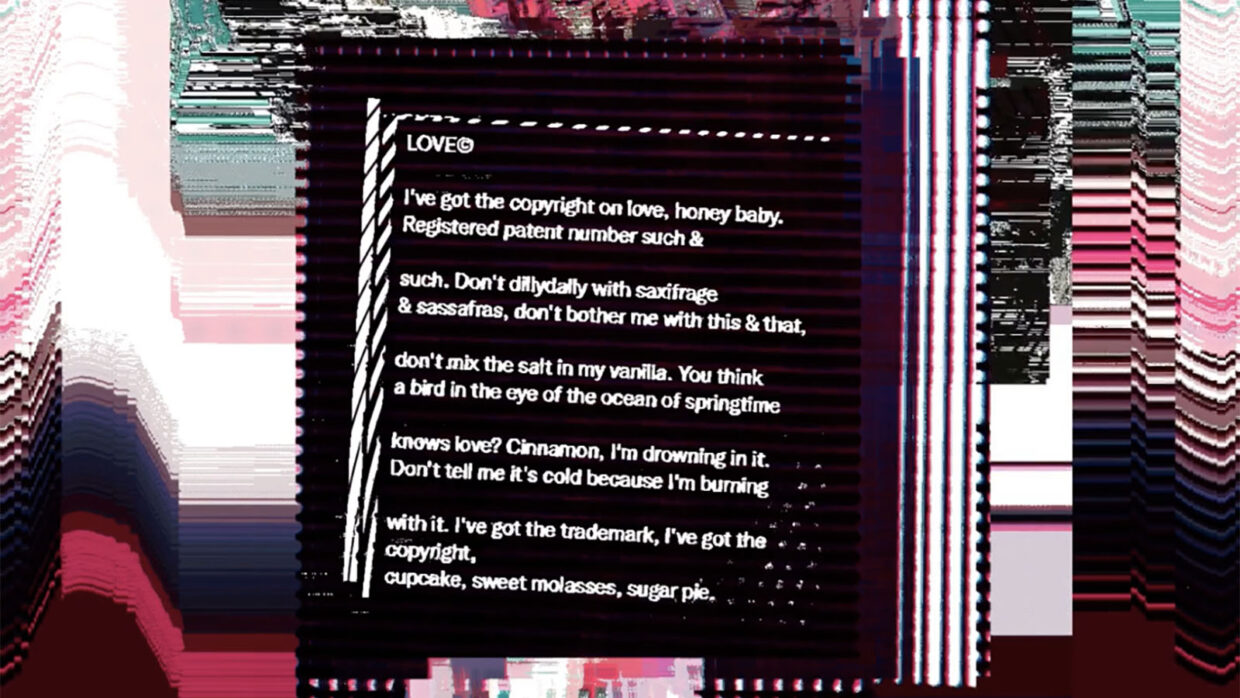The value of poetry NFTs came into focus last March when Instagram poet Arch Hades, in collaboration with RAC and Andrés Resiginer, sold one of her poems as a NFT for more than $70,000 on Nifty Gateway. She would go on to break that record when she sold yet another NFT for $525,000 at Christie’s in November. But even far from the high-profile digital art market, the merging of poetry and NFTs is bearing out value that can’t be measured by a dollar amount.
Late in 2021, theVERSEverse arrived as a poetry NFT gallery aimed at elevating and onboarding poets, featuring meetings between poets and AI to produce generative poems, and poets and crypto-native artists to create unique works of art. In a short time, the platform has made its presence known at events from NFT.NYC to Metaverse Art Week, and in April, received a grant from the Tezos Foundation to further fund its literary innovations in Web3. Currently, the project is in the midst of a collaboration with SuperRare for its Genesis collection, selling poems ranging from .3 to 3 ETH ($500 to $5,000).

theVERSEverse was founded as a NFT gallery to onboard poets, while featuring generative poems and collaborations with digital artists. Image: POEM = WORK OF ART Metaverse Gallery / theVERSEverse
theVERSEverse was co-founded by Kalen Iwamoto, Ana Maria Caballero, and Sasha Stiles, who, in between them, boast years of experience in art and publishing, in addition to participation in communities such as Etherpoems. While their paths to Web3 differed, they collectively saw the potential the blockchain represented to poetry and literature. “I thought that poetry lacked the ability to really participate in art transactions,” says Ana Maria Caballero. “Valuation and blockchain provenance solved that logistical problem, allowing us to engage and experience digital poems the same way that we do digital art.”
As poetry begins to make its mark on the blockchain, we caught up with theVERSEverse’s co-founders and community manager Elisabeth Sweet to learn more about their work onboarding the literary arts.
What’s the big question you’re trying to answer with theVERSEverse?
Kalen Iwamoto: What could crypto literature look like? What would happen if we brought together literature and writing and text and we brought it into the crypto world or NFT world? How do we create economic stability and community for our writers? The theVERSEverse naturally sprung out of those questions as we sought a Web3 existence.
How do you see Web3 impacting the field of poetry?
Ana Maria Caballero: The opportunity to connect with people from all over the world who are actively looking to discover new art forms has been expanded even further. I’ve worked with dancers, photographers, filmmakers, and with musicians on my poems. That’s been great because everyone brings their own audience, their own vision, their own interpretation, and it really just enriches and enlivens the poems. Collaboration is such a key component of Web3’s decentralized ethos and something that poetry really stands to benefit from.
There’s such an engaged and interested community right now around NFTs and crypto art, but much less so for poetry. Web3 is allowing us to shift focus to poetry.

AI-powered poems by Ana Maria Caballero (City Lights 2, left) and Sasha Stiles (Flower-Colored Light 9, center); and Kalen Iwamoto’s Seeds and Ashes series (right). Images: theVERSEverse
What does your editorial or curatorial process look like?
Sasha Stiles: It really depends on the prerogatives of the writer. Some focus on the act of writing and they don’t have an artistic practice, so it makes sense for them to be paired with a visual artist. There are other creatives who don’t necessarily think of themselves as writers, maybe they just think of themselves as coders… There’s so many different approaches and it’s different for everybody. We really try to represent the breadth of what’s happening in this space, but also give a lot of room for poets and writers to play with creating new things that haven’t existed yet or that we don’t see examples of yet.
What goes into your community engagement strategy?
Elisabeth Sweet: We’re partnering with 8scribo, an on-chain haiku minting platform positioning themselves to be a poetry platform; we’re minting haiku’s directly onto Tezos. We’ve also hosted a series of Twitter chats and Twitter spaces to bring in folks and engage with what they see in the poetry sphere right now. This summer, we took over the SuperRare Gallery in Soho to launch our Genesis collection, which helped us connect both with our built audience and make new connections, as we had many people who walked in off the street.
Have there been some challenges to onboarding poetry or gaining collector interest?
Iwamoto: One of the challenges that we face is finding collectors and growing the collector base for poetry. We’ve had some but everything is still in its early stages. I think collectors are slower to catch on to poetry than digital art pieces.
Stiles: There’s a lot of crypto native writers who are game to take on the challenge and want to be involved in this, but there are very few established names in the literary world who understand what a NFT is or who want to take the time to get involved. We are a place for poetry in the metaverse, but the reality is that we exist as a hybrid gallery. We are cross-chain, and we’re also digital and physical. We work with a lot of different partners, both institutional and commercial, in addition to various writers, groups and conferences. At the end of the day, we want to be a hub for lots of different communities to come together and that’s really how we foresee addressing these challenges.



